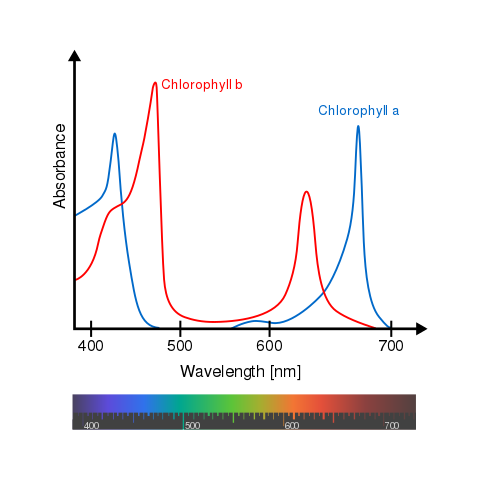Curiosity › Science › Biology and Medicine › At what stage in plants, a burst of light has the most effect on future growth › Reply To: At what stage in plants, a burst of light has the most effect on future growth
Your friend’s observation makes sense. Take a look at the absorption spectra of chlorophyll.

Daniele Pugliesi | CC BY-SA 3.0
In the green range, the absorption rate is relatively low for the primary pigments chlorophyll b and chlorophyll a, which means the leaf reflects all the green light (the reason why plants appear green).
But in the violet and red ranges, the absorption peaks and chlorophyll benefit the most. And your 440 nm blue light happens to fall under that spectral range called the photosynthetically active radiation (400 to 500 nm and 600 to 700 nm – your optimal wavelength), which promotes photosynthesis in plants.
And to back your friend’s observation, here is a study on how the removal of green and near-UV radiation promotes plant and algae growth with visible improvements. Most of the plants have shown positive growth characteristics without the green light. For most of the plants, you could try it right from the germination phase.
But mind the fact that plants have other pigments that benefit from the green light too. Also, as the green light penetrates deep into the leaves than the red and the blue regions, it enables the chloroplasts that are away from the illuminated surface to promote photosynthesis. More on this, here and here.
